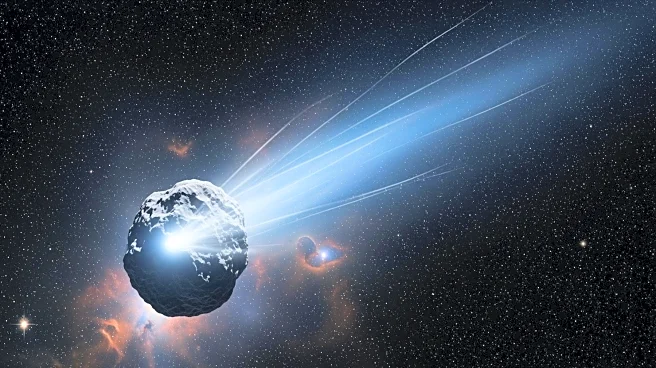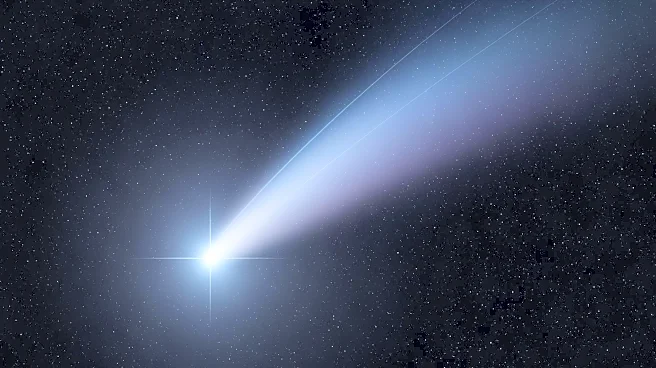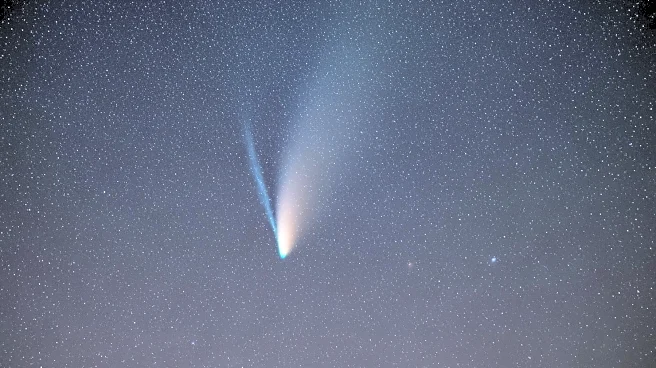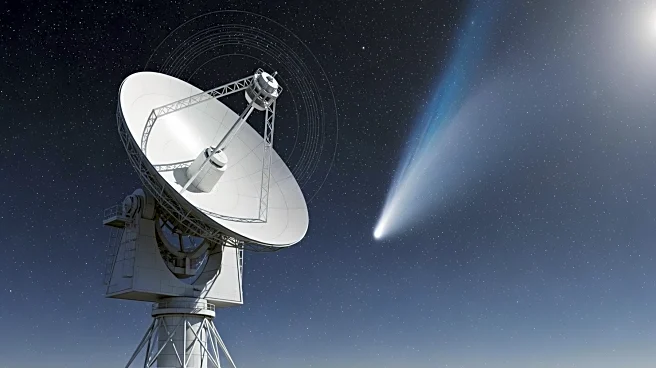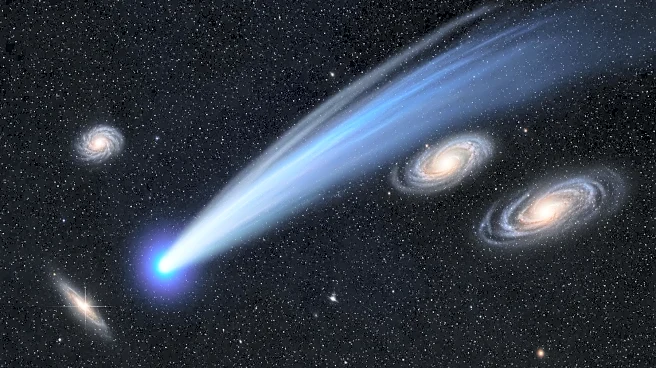What's Happening?
Comet Lemmon (C/2025 A6) has reached its perihelion, the closest point to the Sun, on November 8, 2025. This astronomical event was captured by Hassan Abdollahabadi from Chelpo, Rivash, Iran, using a Canon mirrorless camera. The image was created by stacking
twenty 20-second sky frames taken with a 135mm lens at f/2.8 and ISO 1600. The comet is now on an outbound path, continuing its journey through the solar system. This event is significant for astronomers and sky watchers, as perihelion marks a key phase in a comet's orbit, often resulting in increased visibility and activity.
Why It's Important?
The perihelion of Comet Lemmon is an important event for astronomers and enthusiasts, as it provides a unique opportunity to observe and study the comet's behavior and characteristics. Comets are remnants from the early solar system, and their study can offer insights into the formation and evolution of planetary systems. The visibility of Comet Lemmon during its perihelion allows for detailed observation and data collection, which can contribute to scientific understanding of cometary composition and dynamics. This event also engages the public interest in astronomy, fostering educational opportunities and inspiring future generations of scientists.
What's Next?
As Comet Lemmon continues on its outbound path, astronomers will monitor its trajectory and any changes in its activity. Observatories and amateur astronomers will likely continue to capture images and data, contributing to ongoing research. The comet's journey may lead to further discoveries about its composition and interaction with solar radiation. Additionally, the event may prompt increased public interest in upcoming astronomical phenomena, encouraging educational programs and community engagement in space science.
Beyond the Headlines
The observation of Comet Lemmon at perihelion highlights the importance of international collaboration in astronomy. The imagery captured from Iran underscores the global nature of scientific exploration and the shared interest in celestial events. This collaboration can lead to a more comprehensive understanding of comets and their role in the solar system. Furthermore, the event may inspire advancements in imaging technology and techniques, enhancing future astronomical observations.



